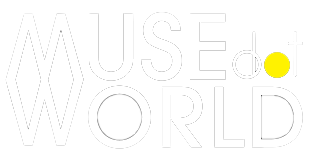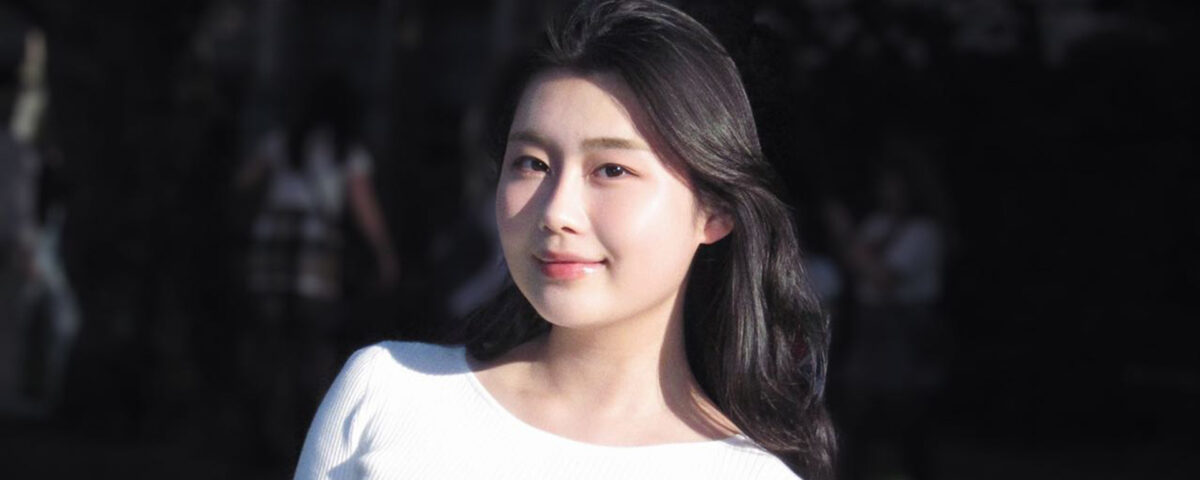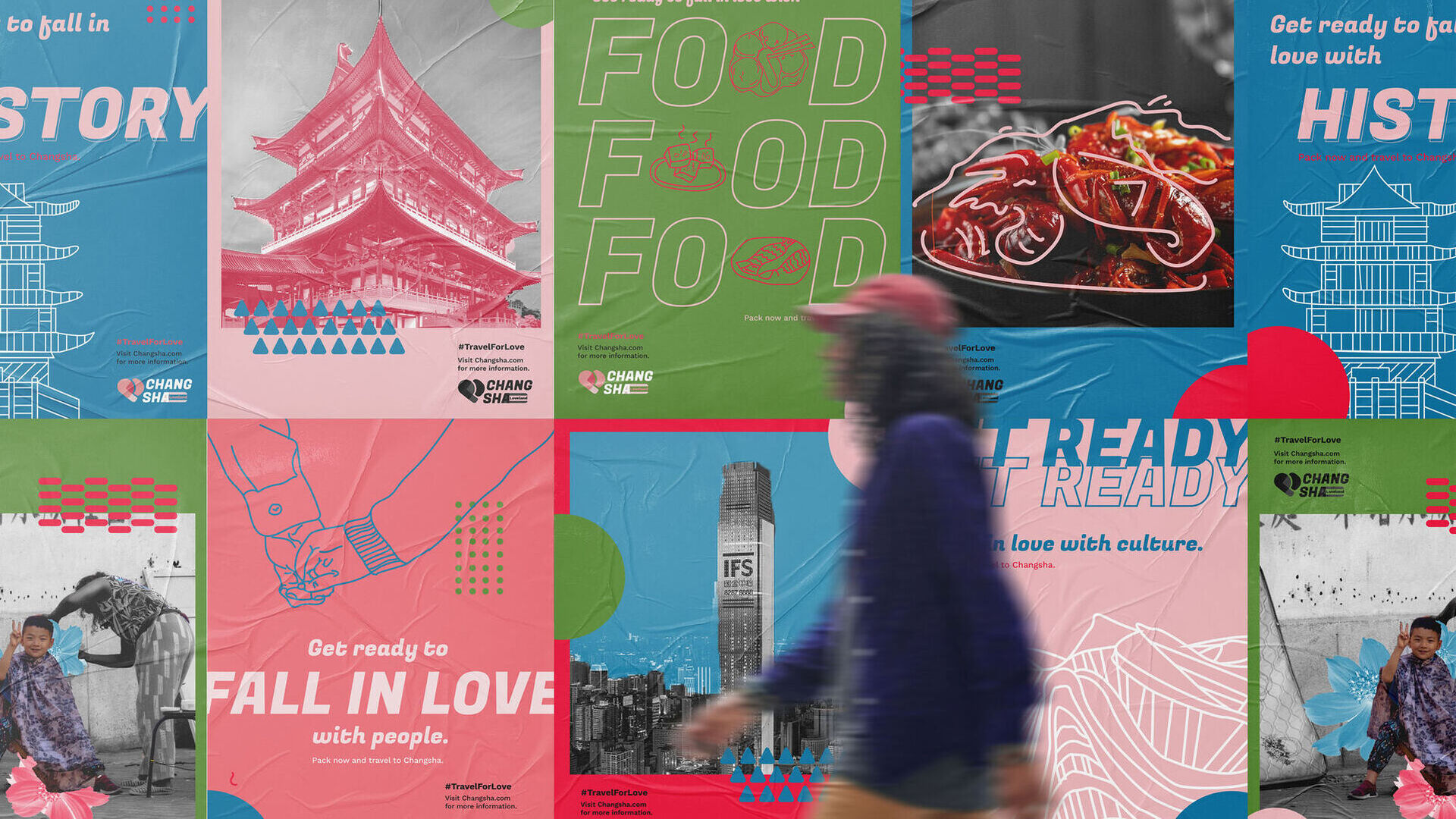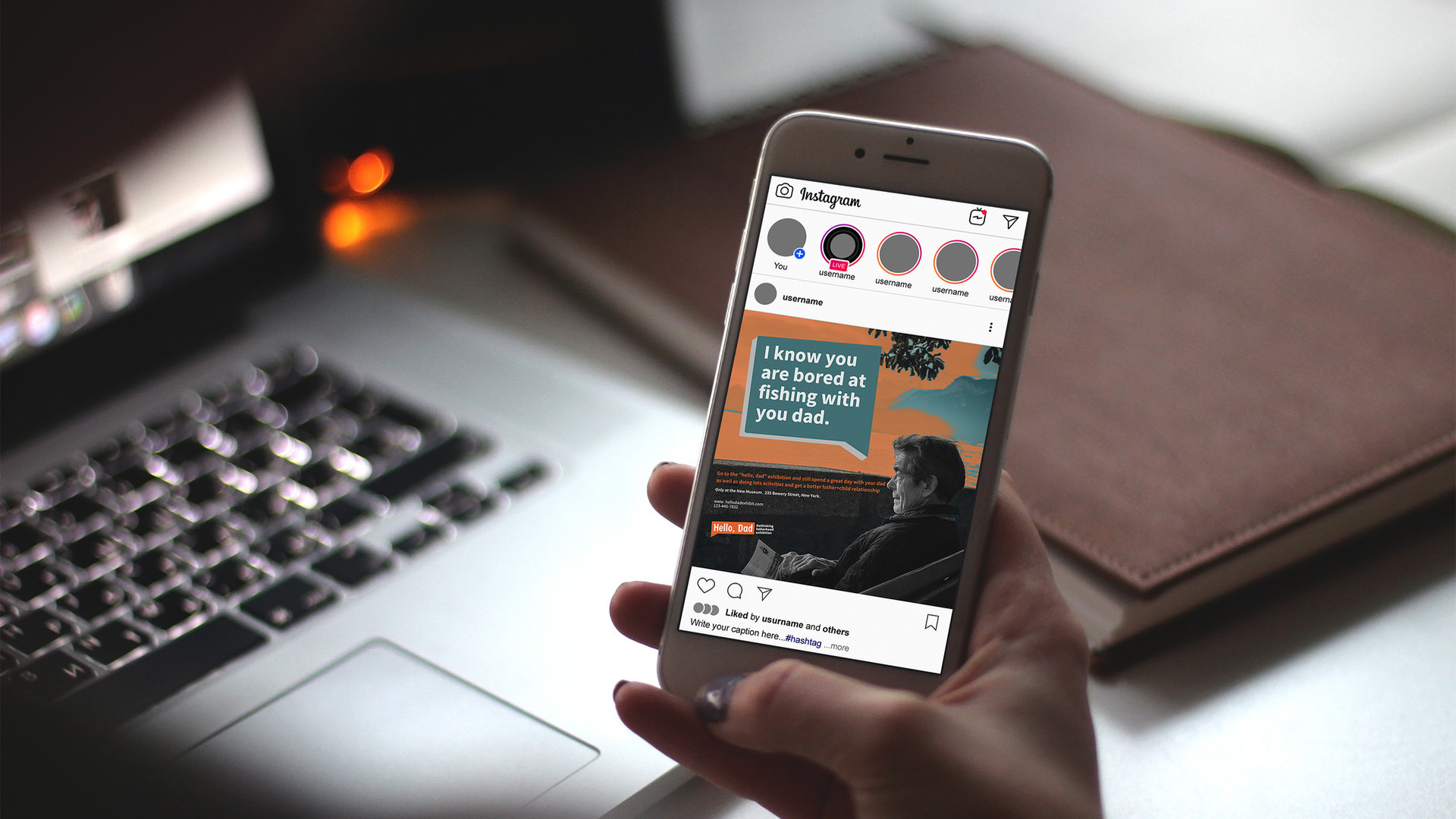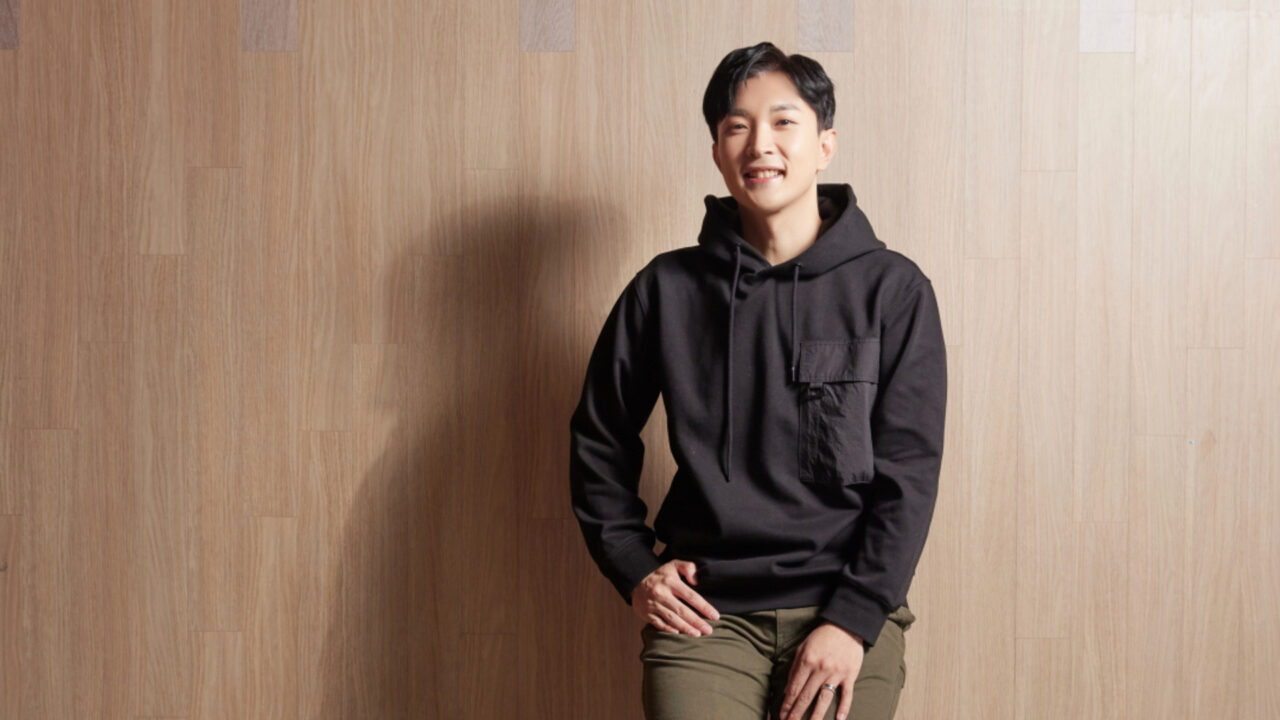Shaping UX Through Visual Thinking: An Interview with Maomao Ding

Two Designers Rethink the Built Environment | Featuring Xueyuan Wang & Justin Fan
April 22, 2025
The Poetry of Bamboo Through ChingKe Lin
April 22, 2025Maomao Ding
Maomao Ding is a UX/UI designer whose work brings together usability and beauty through thoughtful research, interaction design, and compelling visuals. Her background in design and communication allows her to shape experiences that are both purposeful and aesthetically refined.
Hi, my name is Maomao Ding. I’m a UX/UI designer with a background in both Human-Centred Design & Engineering and Communications Design. My work blends research, storytelling, and interaction design with a strong visual foundation, creating intuitive experiences that are both functional and engaging.
I’ve worked across big tech, startups, agencies, and NGOs. Beyond UX, I have a deep love for visual design and enjoy working on branding and graphic projects on the side. This passion for aesthetics complements my UX work, allowing me to craft experiences that are not only user-friendly but also visually compelling.
For me, design is about finding the perfect balance between usability and creativity. Whether refining a product’s interaction flow or crafting a brand’s identity, I love bringing thoughtful, well-rounded design solutions to life.
I became a designer because I’m fascinated by the way people interact with technology and how good design can make those interactions feel seamless and intuitive. Whether it’s a simple interface or a complex AI-powered system, design shapes how we connect with digital experiences.
I’m especially interested in Human-Computer Interaction and Human-AI Interaction, where thoughtful design can bridge the gap between technology and human needs. As AI and emerging technologies evolve, it’s more important than ever to create experiences that feel natural, trustworthy, and empowering. For me, design is about more than just aesthetics, It’s about making technology work for people in ways that are clear, meaningful, and even delightful.
I’m currently a UX/UI designer at an in-house design agency in New York. We work with clients across industries like healthcare, music entertainment, and ticketing. Most of my work has been in healthcare, where I design products that help users navigate complex systems more easily and efficiently.
The products I design focus on solving real problems, whether it's helping medical professionals manage patient data more effectively or making healthcare services more accessible for patients. Every project starts with understanding user needs and pain points, and from there, I work on crafting experiences that feel intuitive and genuinely useful. Seeing how design can directly improve people’s interactions with technology is what makes this work so rewarding.
Design is about creating clarity, solving problems, and making experiences more intuitive. It is more than just visuals; it shapes how people interact with products and information in ways that feel natural and meaningful.
As a UX Designer and Visual Designer, I believe design carries the responsibility to be both functional and impactful. Every decision should serve a purpose, whether it improves usability, enhances storytelling or strengthens a brand’s identity. Thoughtful design not only solves problems but also creates connections and leaves a lasting impression.
I love design that feels intuitive, engaging, and tells a story. Product design excites me because it shapes how people interact with technology in a way that feels natural and effortless. I also have a soft spot for branding, editorial, and graphic design because they create emotion and identity.
The best designs, in my opinion, aren’t just about solving problems but about making people feel something—whether it’s delight, trust, or curiosity. I’m always drawn to work that brings everything together in a way that just clicks, leaving a lasting impact without people even realising why it works so well.
Place Branding - Changsha: The idea for my award-winning branding project came from my love for my hometown, Changsha, and the desire to share its unique culture with the world. Changsha has over 3,000 years of history, incredible food, and a vibrant energy that deserves more international attention.
I wanted to create a visual identity that felt true to the city while making it more inviting to foreign tourists. By highlighting local traditions, landmarks, and the spirit of the people, the design tells a story that draws visitors in and gives them a glimpse of what makes Changsha such a special place.
Exhibit Design - Hello, Dad: The idea came from a personal observation—that the bond between fathers and children is often overlooked or underexplored. We celebrate mothers in many ways, through holidays, media, and emotional expressions, but with fathers, the relationship can be more distant or harder to articulate.
I wanted to create something that makes space for that gap to be acknowledged and gently bridged. I believe design can open emotional conversations, and this project is my way of inviting people to slow down, be present with their fathers, and maybe say the things that usually go unsaid.
Place Branding - Changsha: The main inspiration for this design came from the culture, history, people, food, and personal memories. The warmth of the people, the lively street scenes, and the bold flavours of the local cuisine all played a huge role in shaping the design.
Exhibit Design - Hello, Dad: My main inspiration came from my personal relationship with my dad. We’ve always had a quiet kind of connection. He was there, supportive, but we didn’t really talk deeply or share emotions openly. As I grew older, I started to realise how much I wanted to understand him, not just as my father, but as a whole person with his own story.
That curiosity, and sometimes that distance, became the emotional core of this project. “Hello, Dad” was born from that feeling. I wanted to create a space where people like me could reconnect with their fathers in a more meaningful way. It’s not about dramatic moments, instead, it’s about small, shared experiences that open the door to real communication.
This exhibition is a way to say the things we don’t always know how to say and to simply spend time together in a way that feels intentional and heartfelt.
Absolutely. My bicultural background between China and the U.S. has shaped the way I approach design, especially when it comes to blending cultural heritage with modern storytelling. Growing up in China, I was surrounded by rich history, traditions, and a deep sense of community, all of which influenced my work.
At the same time, my experience in the U.S. has given me a fresh perspective on design thinking, user experience, and global aesthetics. When working on projects, I naturally pull from both influences. I find myself drawn to the details, symbolism, and storytelling found in Chinese culture while also considering how to make designs accessible and engaging for a broader audience.
Winning the London Design Awards is a meaningful milestone in my personal journey as a designer. Since I don’t have a company or a team, this recognition feels especially personal because it reflects the time, emotion, and intention I put into the project. It reminds me that honest, human-centred ideas can truly resonate with others.
More than anything, it encourages me to keep creating, to take on new challenges, and to continue building a body of work that reflects the stories and connections I care about.
Place Branding - Changsha: One project I submitted is a Place Branding project called Changsha, which focuses on reimagining the identity of my hometown, Changsha, in a way that blends tradition with contemporary culture. The goal was to create a cohesive visual language that reflects the city's unique spirit—its creativity, energy, and deep cultural roots—while also making it accessible and engaging for a wider audience.
I chose to enter this project because it was a chance to represent where I come from and to explore how design can shape the perception of a place. It’s not just about logos or colours; it’s about storytelling and emotional connection. For me, this project was both a love letter to my city and an exploration of how design can influence how people experience and relate to a place.
Exhibit Design - Hello, Dad: The project I entered is called *Hello, Dad*, an interactive pop-up exhibition designed to encourage a deeper connection between fathers and their children. It invites visitors to come with their dads and engage in simple, hands-on activities that help open up communication and build understanding. I chose to enter this project because it carries a message that’s very personal to me.
It reflects my own experience of wanting to know my father better and realising how often that kind of relationship is overlooked or left unspoken. I felt that this design had the potential to create quiet but meaningful moments for people, and I wanted to share that possibility with a larger audience through the London Design Awards.
One of the main challenges I faced during the design process for both projects was the research phase. Each project required a different type of sensitivity and depth. For "Hello, Dad”, I needed to explore the emotional dynamics between fathers and children, which meant collecting personal stories, reflecting on my own relationship with my dad, and understanding how others experience that bond.
For “Changsha”, the challenge was finding an authentic way to represent the city's identity by researching its history, culture, and how it is perceived by both locals and visitors. In both projects, the research was more than just background work—it helped shape the entire direction of the design. By staying curious, listening carefully, and allowing the insights to guide my decisions, I was able to overcome the uncertainties and create something that felt honest and meaningful.
Winning this award gives me a strong sense of encouragement and validation in my path as a designer. It shows me that personal and emotionally driven work can connect with others and be recognised on a larger platform.
This experience motivates me to keep exploring meaningful ideas, take creative risks, and stay true to the kind of work that feels authentic to me. It also gives me more confidence to grow, seek new opportunities, and continue building a body of work that reflects both my values and my voice.
One of my favourite things about the design industry is its ability to create an emotional connection. Good design can make people feel seen, understood, or inspired, and I love being part of that process.
Secondly, I appreciate how diverse and ever-evolving the field is. There’s always something new to learn, whether it’s a tool, a trend, or a way of thinking, and that keeps me curious and engaged.
Last but not least, I love how collaborative design can be. Even when working independently, design often invites conversation, feedback, and shared perspectives, which makes the process more dynamic and meaningful.
My advice is to start with something personal and meaningful, while always keeping your audience in mind. Great design should connect with people and solve a real problem. Focus on what the audience needs and how your work can improve their experience.
Make sure your design is clear, intentional, and adds value rather than creating confusion. Stay curious, be patient with your process, and keep learning. When your work is both thoughtful and emotionally honest, it naturally stands out.
Maomao Ding
Maomao Ding is a UX/UI designer whose work brings together usability and beauty through thoughtful research, interaction design, and compelling visuals. Her background in design and communication allows her to shape experiences that are both purposeful and aesthetically refined.
Read more about the Conversation with Baoqi Ding & Chuoer Liang | User Experiences Redefined here.
